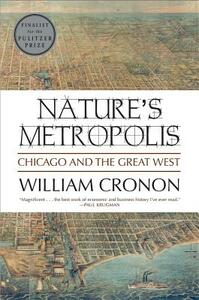Take a photo of a barcode or cover
When people ask me where I'm from I always say: The country, a rural area, no fences, no sidewalks, not connected to the city. In this book Cronon dynamites apart my entire idea of place.
It shows the symbiosis and growth of Chicago and what we now call the Midwest during the 1800s. This is important not just in showing the extremely fast rise of our 3rd largest city, but in showing the complete entanglement of the countryside to the city. Through narrative and facts, he relentlessly and directly changed my view of how and why the crops, trees and livestock of the "hinterlands" make their way into the city, then and now.
His restrained use of anecdotes and graphs make the book a bit slow, yet more convincing. I would recommend it to anyone interested in an economic history of the U.S. during the start of our rise to economic dominance, especially due to the ecological considerations that are rare in other economic histories.
It shows the symbiosis and growth of Chicago and what we now call the Midwest during the 1800s. This is important not just in showing the extremely fast rise of our 3rd largest city, but in showing the complete entanglement of the countryside to the city. Through narrative and facts, he relentlessly and directly changed my view of how and why the crops, trees and livestock of the "hinterlands" make their way into the city, then and now.
His restrained use of anecdotes and graphs make the book a bit slow, yet more convincing. I would recommend it to anyone interested in an economic history of the U.S. during the start of our rise to economic dominance, especially due to the ecological considerations that are rare in other economic histories.
